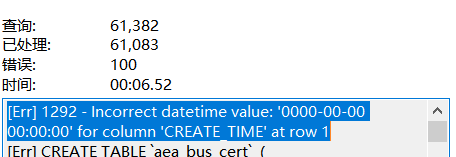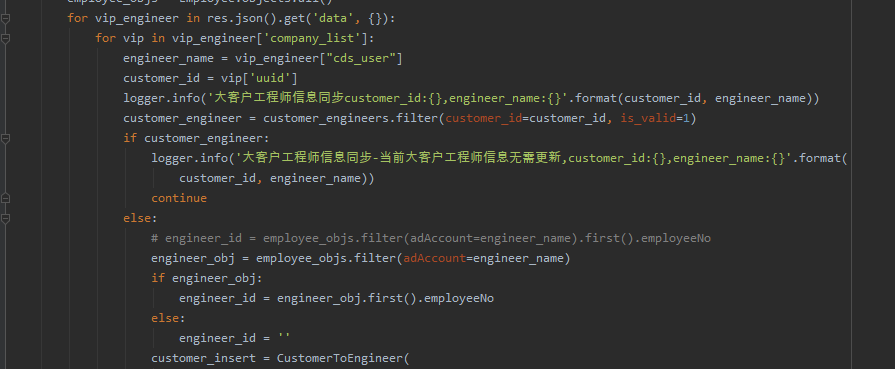相比于使用一个中间件来“暴力”缓存接口的响应,提高接口查询速度而言,Repository缓存能更好的控制缓存粒度和更新时机 —— 鲁迅。
场景
Tester—A:这个 getInfo 接口咋这么慢呢?查一下要5+s?QPS竟然只有10!!!!
RD-B :这是因为getInfo要查库。。。N多库
Tester-B:那优化一下呗?
RD-B :好的,容我操作一波(给接口加上一个响应缓存),好了你再测试一下
Tester-B:(测试中。。。),速度果然快了不少。诶不对,这个接口里拿到的用户信息不对,我明明已经balaba了,这里没有更新!!!
RD-B :哦哦哦,我晓得咯,再容我操作一波(缓存加有效时间,个人信息更新的时候再强删缓存),O了
至此开始了针对于QPS+缓存更新的一些列测试。。。剧终。
QPS和响应时间是后(jie)端(kou)工程师非常熟悉的指标,这两个值能比较直观的反映该接口的性能,间接直接影响了前端页面的流畅度。。。
问题来了
接口查询性能如何提高
除去机器和编程语言的因素之后,肯定要从业务场景出发,分析接口响应缓慢的原因。譬如,最常见的:
- 查N多表,表还没有索引orz
- 无用数据,增加传输的Size
- 反复查询某些
热点数据,但每次都直接打到数据库 - 上游服务响应缓慢
- 其他
好了,这里只讨论热点数据的缓存方案,毕竟要具体场景具体分析,而缓存方案是比较通用的。
缓存方案如何选择
| 序号 | 缓存方案 | 优势 | 劣势 |
|---|---|---|---|
| 1 | Response缓存 | 简单暴力 | 缓存更新时机不好把控,如果面面俱到可能心态崩坏;缓存粒度太大,无法局部更新;针对查询接口有帮助,其他业务下查询数据则毫无帮助 |
| 2 | Repository缓存 | 粒度由Repo自行掌握,可控性强;Repo复用场景下会提高应用整体的速度 | 需要针对各个Repo做缓存的处理;改动较多;其他orz |
总的来说,Repository的缓存方案,在上述背景上较简单暴力的中间件缓存法要更加优雅可控~。
缓存算法
提到缓存就一定会提到缓存替换策略,有最常见的:LRU LFU FIFO MRU(最近频繁使用算法) LRU的多个变种算法 LIRS等。
这里选用了LRU-K(K=2)并基于golang来实现 cached-repository,更多算法的详细信息参见参考文档中的LRU和LRU-K:
这里分成了两个interface:
CacheAlgor重点在于与Repo交互,所以只提供了简单的增删改查,底层还是基于Cache来实现的。本意是想实现多种缓存替换算法来丰富cached-repository,orz
// cache.go
// CacheAlgor is an interface implements different alg.
type CacheAlgor interface {
Put(key, value interface{})
Get(key interface{}) (value interface{}, ok bool)
Update(key, value interface{})
Delete(key interface{})
}lru.Cache 在于提供 基于LRU-like算法缓存和替换能力,所以接口会更丰富一些,
// lru/types.go
// Cache is the interface for simple LRU cache.
type Cache interface {
// Puts a value to the cache, returns true if an eviction occurred and
// updates the "recently used"-ness of the key.
Put(key, value interface{}) bool
// Returns key's value from the cache and
// updates the "recently used"-ness of the key. #value, isFound
Get(key interface{}) (value interface{}, ok bool)
// Removes a key from the cache.
Remove(key interface{}) bool
// Peeks a key
// Returns key's value without updating the "recently used"-ness of the key.
Peek(key interface{}) (value interface{}, ok bool)
// Returns the oldest entry from the cache. #key, value, isFound
Oldest() (interface{}, interface{}, bool)
// Returns a slice of the keys in the cache, from oldest to newest.
Keys() []interface{}
// Returns the number of items in the cache.
Len() int
// iter all key and items in cache
Iter(f IterFunc)
// Clears all cache entries.
Purge()
}关于如何实现LRU或者LRU-K,网上已经有很多文章了,原理也不复杂,这里就不过多赘述了,直接上测试结果
简单测试
完整代码参见code
// MysqlRepo .
type MysqlRepo struct {
db *gorm.DB
calg cp.CacheAlgor
// *cp.EmbedRepo
}
// NewMysqlRepo .
func NewMysqlRepo(db *gorm.DB) (*MysqlRepo, error) {
// func NewLRUK(k, size, hSize uint, onEvict EvictCallback) (*K, error)
c, err := lru.NewLRUK(2, 10, 20, func(k, v interface{}) {
fmt.Printf("key: %v, value: %v\n", k, v)
})
if err != nil {
return nil, err
}
return &MysqlRepo{
db: db,
// func New(c lru.Cache) CacheAlgor
calg: cp.New(c),
}, nil
}
// GetByID .
func (repo MysqlRepo) GetByID(id uint) (*userModel, error) {
start := time.Now()
defer func() {
fmt.Printf("this queryid=%d cost: %d ns\n",id, time.Now().Sub(start).Nanoseconds())
}()
v, ok := repo.calg.Get(id)
if ok {
return v.(*userModel), nil
}
// actual find in DB
m := new(userModel)
if err := repo.db.Where("id = ?", id).First(m).Error; err != nil {
return nil, err
}
repo.calg.Put(id, m)
return m, nil
}
// Update .
func (repo MysqlRepo) Update(id uint, m *userModel) error {
if err := repo.db.Where("id = ?", id).Update(m).Error; err != nil {
return err
}
fmt.Printf("before: %v\n", m)
m.ID = id
if err := repo.db.First(m); err != nil {
}
fmt.Printf("after: %v\n", m)
// update cache, ifcache hit id
repo.calg.Put(id, m)
return nil
}
// Delete .
func (repo MysqlRepo) Delete(id uint) error {
if err := repo.db.Delete(nil, "id = ?", id).Error; err != nil {
return err
}
repo.calg.Delete(id)
return nil
}
func main() {
// ... prepare data
rand.Seed(time.Now().UnixNano())
for i := 0; i < 1000; i++ {
go func() {
wg.Add(1)
id := uint(rand.Intn(10))
if id == 0 {
continue
}
v, err := repo.GetByID(id)
if err != nil {
fmt.Printf("err: %d , %v\n", id, err)
continue
}
if v.ID != id ||
v.Name != fmt.Sprintf("name-%d", id) ||
v.Province != fmt.Sprintf("province-%d", id) ||
v.City != fmt.Sprintf("city-%d", id) {
fmt.Printf("err: not matched target with id[%d]: %v\n", v.ID, v)
}
wg.Done()
}()
}
wg.Wait()
}➜ custom-cache-manage git:(master) ✗ go run main.go
this queryid=9 cost: 245505 ns
this queryid=1 cost: 131838 ns
this queryid=3 cost: 128272 ns
this queryid=2 cost: 112281 ns
this queryid=7 cost: 123942 ns
this queryid=4 cost: 140267 ns
this queryid=7 cost: 148814 ns
this queryid=9 cost: 126904 ns
this queryid=6 cost: 129676 ns
this queryid=2 cost: 174202 ns
this queryid=1 cost: 151673 ns
this queryid=4 cost: 156370 ns
this queryid=3 cost: 159285 ns
this queryid=6 cost: 142215 ns
this queryid=3 cost: 691 ns
this queryid=1 cost: 450 ns
this queryid=8 cost: 160263 ns
this queryid=5 cost: 149655 ns
this queryid=4 cost: 756 ns
this queryid=8 cost: 143363 ns
this queryid=3 cost: 740 ns
this queryid=9 cost: 558 ns
this queryid=2 cost: 476 ns
this queryid=5 cost: 184098 ns
this queryid=1 cost: 824 ns
this queryid=8 cost: 556 ns
this queryid=9 cost: 632 ns
this queryid=7 cost: 480 ns
this queryid=5 cost: 439 ns
this queryid=5 cost: 409 ns
this queryid=7 cost: 431 ns
this queryid=6 cost: 479 ns
this queryid=4 cost: 423 ns
this queryid=8 cost: 423 ns
this queryid=1 cost: 411 ns
this queryid=6 cost: 423 ns
this queryid=8 cost: 394 ns
this queryid=7 cost: 410 ns
this queryid=9 cost: 424 ns
this queryid=4 cost: 428 ns
this queryid=2 cost: 433 ns
this queryid=4 cost: 420 ns
this queryid=9 cost: 424 ns
this queryid=6 cost: 406 ns
this queryid=6 cost: 399 ns
this queryid=5 cost: 405 ns
this queryid=2 cost: 428 ns
this queryid=9 cost: 383 ns
this queryid=4 cost: 399 ns
this queryid=7 cost: 413 ns
this queryid=4 cost: 381 ns
this queryid=1 cost: 427 ns
this queryid=2 cost: 430 ns
this queryid=1 cost: 468 ns
this queryid=1 cost: 406 ns
this queryid=4 cost: 380 ns
this queryid=2 cost: 360 ns
this queryid=3 cost: 660 ns
this queryid=6 cost: 393 ns
this queryid=5 cost: 419 ns
this queryid=7 cost: 1254 ns
this queryid=6 cost: 723 ns
this queryid=4 cost: 503 ns
this queryid=8 cost: 448 ns
this queryid=3 cost: 510 ns
this queryid=1 cost: 432 ns
this queryid=2 cost: 999 ns
this queryid=1 cost: 419 ns
this queryid=8 cost: 658 ns
this queryid=9 cost: 1322 ns
this queryid=9 cost: 543 ns
this queryid=4 cost: 1311 ns
this queryid=5 cost: 348 ns
this queryid=4 cost: 309 ns
this queryid=5 cost: 350 ns
this queryid=9 cost: 311 ns
this queryid=5 cost: 336 ns
this queryid=3 cost: 567 ns
this queryid=9 cost: 293 ns
this queryid=7 cost: 338 ns
this queryid=4 cost: 499 ns
this queryid=7 cost: 318 ns
this queryid=3 cost: 330 ns
this queryid=7 cost: 322 ns
this queryid=6 cost: 339 ns
this queryid=7 cost: 1273 ns
this queryid=4 cost: 1175 ns
this queryid=6 cost: 306 ns
this queryid=2 cost: 316 ns
this queryid=5 cost: 330 ns
this queryid=5 cost: 322 ns
this queryid=6 cost: 324 ns
this queryid=8 cost: 291 ns
this queryid=2 cost: 310 ns
this queryid=3 cost: 321 ns
this queryid=3 cost: 294 ns
this queryid=6 cost: 293 ns
this queryid=8 cost: 3566 ns
...more ignored水平有限,如有错误,欢迎勘误指正🙏。
代码
github.com/yeqown/cached-repository












